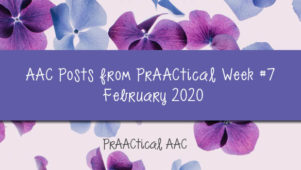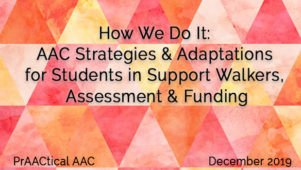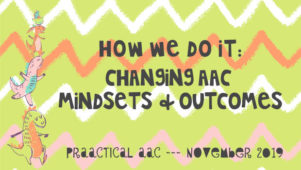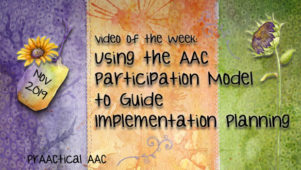PrAACtical Solutions: AAC Goes to High School
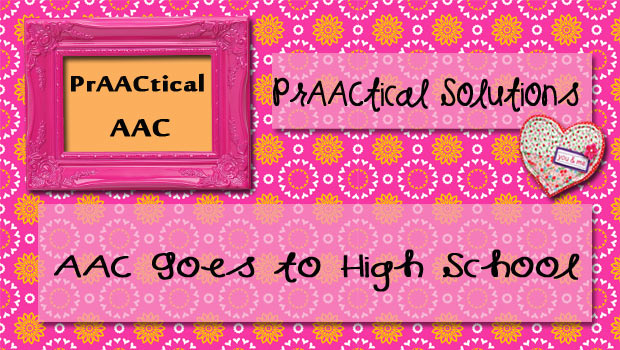
One of the reasons that we fell in love with AAC community was the seemingly boundless capacity for creativity. Creativity is something that most people associate with art and writing more than clinical work, but the reality is that creative problem-solving is a key skill among successful SLPs. As clinical educators, we’re always interested in finding ways to help our students (future SLPs) to analyze a problem situation and come up with a host of possible solutions. Creativity is enormously valuable in that process and we’re always looking for great examples of creative approaches to tough AAC problems.
–
So I was very intrigued by the way that educators, administrators, and therapists in British Columbia set out to help high school students with AAC needs master their systems. Approximately 5 years ago, SET-BC began the process of developing an AAC course that could be used for credit in provincial high schools. Once approved, students could get credit for learning to use their AAC systems. For some students, that make a world of sense. It allows them to have systematic instruction to develop the linguistic, strategic, operational, and social competence they need to be effective and achieve their academic potential.
–
I was fascinated to learn how the team from Summerland Secondary School supported Mike through this process. The team met to work out the specifics of the AAC Curriculum and, once approved, began implementation of a 4-course series. He had AAC instruction for one class period each day. Eventually, Mike completed 120 hours of coursework designed to help him gain competence with his high tech SGD (PRC’s Vantage Lite). Those efforts took approximately a year and a half, allowing Mike to gain skills that will serve him well. In addition, his achievement in this highly individualized program allowed Mike to earn 4 high school credits.

–
So I was very intrigued by the way that educators, administrators, and therapists in British Columbia set out to help high school students with AAC needs master their systems. Approximately 5 years ago, SET-BC began the process of developing an AAC course that could be used for credit in provincial high schools. Once approved, students could get credit for learning to use their AAC systems. For some students, that make a world of sense. It allows them to have systematic instruction to develop the linguistic, strategic, operational, and social competence they need to be effective and achieve their academic potential.
–
I was fascinated to learn how the team from Summerland Secondary School supported Mike through this process. The team met to work out the specifics of the AAC Curriculum and, once approved, began implementation of a 4-course series. He had AAC instruction for one class period each day. Eventually, Mike completed 120 hours of coursework designed to help him gain competence with his high tech SGD (PRC’s Vantage Lite). Those efforts took approximately a year and a half, allowing Mike to gain skills that will serve him well. In addition, his achievement in this highly individualized program allowed Mike to earn 4 high school credits.
—
School credit for learning AAC? Done well, it makes sense to me. Without strong communication skills, access to the general education curriculum and post-secondary education is significantly limited. It’s not the solution for everyone, but for Mike and others like him, it’s a prAACtical approach. We’d love to hear from others who have done similar things. Implementing an AAC Curriculum may be one way to help our students attain higher levels of academic performance and open up future opportunities.
–
 See what Mike learned and his perception of the experience in this video where he is interviewed by SET BC consultant, Kathy Ryan.
See what Mike learned and his perception of the experience in this video where he is interviewed by SET BC consultant, Kathy Ryan.Filed under: PrAACtical Thinking
Tagged With: intervention, schools
This post was written by Carole Zangari

